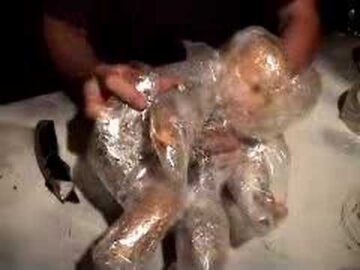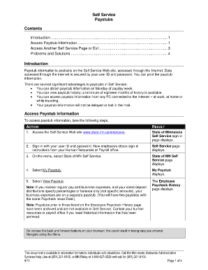
Some assets are primarily used in a business to focus on generating revenue. These assets help the company bring in money to fund other operations and to maintain profits. Condition-based maintenance (CBM) strategies use real data collected by sensors about the equipment to determine whether or not and when corrective action needs to be taken on that piece of equipment. CBM enables maintenance teams to identify the piece of equipment that is “most at risk” and prioritize work on that equipment before others. CBM also improves the balance of production schedules with equipment maintenance needs, ensuring product quality and production stability. The best way to manage your assets is to use an accounting software application that simplifies the entire asset management process from the initial acquisition to asset disposal.
- The other non-fixed assets can be sold or consumed relatively quickly because they are used for short term projects in a business.
- In addition, plant assets that are used for the production of goods or services are not considered to be assets of a particular business.
- The matching principle states that expenses should be recorded in the same financial year when the revenue was generated against them.
- “There’s going to be times when you don’t get as much as you need, and you have to have something that’s [fossil fuel]-based, at least for now, to replace that until other technologies are developed,” he said.
Since these assets produce benefits for more than one year, they are capitalized and reported on the balance sheet as a long-term asset. This means when a piece of equipment is purchased an expense isn’t immediately recorded. Plant assets are physical resources that companies own for more than a year and use to create & sell goods/services to generate income. These are fixed assets such as land, buildings, factories, machinery, and vehicles.
A Guide to Properly Managing Plant Assets
These pressurized, vertical storage tanks hold ethylene oxide, company officials confirmed. In recent reports to state regulators, the company said the fire led to the release of ethylene oxide and ethyl chloride into the air. Ethylene oxide was also found in water initially used to extinguish the fire. Natural gas- and coal-fired power plants generated nearly 60% of the nation’s energy last year, compared with about 20% from renewables such as wind, solar and hydropower, according to the U.S. The EIA forecast last year that renewable generation would more than double by 2050 to 44%. IMARC Group is a leading market research company that offers management strategy and market research worldwide.
Natural gas and coal can provide power around the clock, but solar and wind can do so only when the sun is shining or the wind is blowing, without battery storage. Mr. Nickell said 8,000 megawatts of fossil fuel — enough to power roughly 8 million homes for a year — have been shuttered and 28,000 megawatts of wind capacity added over the past decade. Far more renewable power capacity is needed to serve the same number of homes, he said, because the usability of fossil fuel power’s capacity is 90%. Mr. Biden and proponents of the green agenda say transitioning away from fossil fuels, the second-largest source of greenhouse gas emissions in the power sector, behind transportation, is vital to combating climate change.
DEQ and Dow have said continued air monitoring has not detected emissions of ethylene oxide outside the plant perimeter at or above 0.1 parts per million — the smallest amount detectable by the monitors Dow and DEQ are using. Greg Langley, DEQ spokesman, said the “ongoing” air release likely stems from smaller releases expected to occur as the company removes the material from storage tanks, lines and damaged equipment in the Glycol II Unit. Company officials said they were assessing when to lift the restrictions but don’t expect the safe removal of the potent chemical ethylene oxide to finish until the end of this week. Company officials ordered the limitations as a precaution for their workers and contractors, Dow officials said.
What Is A Plant Asset? Example and More
Tangible assets are the main type of assets that companies use to produce their product and service. Intangible assets are non-physical assets that have a monetary value since they represent potential revenue. adp 401k review Patents, copyrights, and other intangible assets are included in the definition of intangible assets. It’s also important for companies to track their PP&E in case they need to sell assets to raise money.

The fixed asset classification is used to categorize the assets in a company’s balance sheet. Fixed Assets are assets that are fixed in nature and are not subject to change. However, it is still included as a tangible asset on the balance sheets of the companies that own and operate the plants.
Workers and operators of these assets need to be able to use assets to make a good, provide a service, or to improve a product. Capital goods, such as equipment and machines, hold significant value as well. Equipment is unique to each business and is the most diverse of the plant asset types. Equipment plays an integral role in the production of a product or the offering of a service. Equipment can include crude mechanical tools such as hammers or be sophistical pieces of technology such as computer systems. Machines also play a role in the production process or in providing a service.
Decrease in Noncash Current Assets
Mr. Biden has set a federal target date of 2035 to reach 100% clean electricity. Rhode Island, New Jersey and the District of Columbia want to achieve net zero by 2035. They said grid reliability would be jeopardized by quickly transitioning electricity use from coal and natural gas to green alternatives such as wind and solar. Specifics about each of these three transactions are provided in the following sections. Details relating to the treatment of each of these transactions are provided in the following sections.
We partner with clients in all sectors and regions to identify their highest-value opportunities, address their most critical challenges, and transform their businesses. Depreciation also helps spread the asset’s cost out over a number of years allowing the company to earn revenue from the asset. Fixed assets have a useful life assigned to them, which means that they have a set number of years of economic value to the company. Fixed assets also have a salvage value, which is the value remaining at the end of the asset’s life.
What is the difference between assets and plant assets?
One of the CNC machines broke down and Tom purchases a new machine for $100,000. The bookkeeper would record the transaction by debiting the plant assets account for $100,000 and crediting the cash account for the same. In the balance sheet of the business entity, these assets are recorded under the head of non-current assets as Plant, property, and equipment.
As solar panels wear out, this massive recycling plant in Yuma … – Fast Company
As solar panels wear out, this massive recycling plant in Yuma ….
Posted: Wed, 02 Aug 2023 15:00:00 GMT [source]
Secondarily, decreases in accrued revenue accounts indicates that cash was collected in the current period but was recorded as revenue on a previous period’s income statement. In both scenarios, the net income reported on the income statement was lower than the actual net cash effect of the transactions. To reconcile net income to cash flow from operating activities, add decreases in current assets. The following sections discuss specifics regarding preparation of these two nonoperating sections, as well as notations about disclosure of long-term noncash investing and/or financing activities.
Based on the purpose of depreciation mentioned above, depreciation should only commence when the asset is ready for use and is at the location that it is intended to be used. Our sales engineers are experts in automatic asset tracking, tagging and identification,a nd can answer all your questions. A clever analyzer will pick up these anomalies, however, an intelligent analyzer will also pass this information on. This can then be incorporated into the Plant Asset Management system to help planning and operations of the entire plant.
This means keeping equipment properly maintained, updating buildings, adding accessories to machinery, or advancing property in other ways. Improving the capital goods not only can maintain value of an asset, but certain improvements can even add value. Improvements can be a large expense but are considered an investment, as maintaining and improving capital goods adds considerable value to the business. This is typically done through an aggressive plant asset maintenance plan that can be easily followed and carried out on a routine basis. It’s impossible to manufacture products without equipment and machinery, or a building to house them. If the equipment or machinery in question is a necessary part of your business operation, it’s a plant asset.
Presentation of Plant Assets
Property, plant, and equipment (PP&E) are the long-term, tangible assets that a company owns. PP&E, which includes trucks, machinery, factories, and land, allows a company to conduct and grow its business. The plant assets definition in business accounting refers to fixed business assets that depreciate over time.
Pan African Mintails tailings plant to start production in new year – Moneyweb
Pan African Mintails tailings plant to start production in new year.
Posted: Wed, 02 Aug 2023 05:18:42 GMT [source]
This method implies charging the depreciation expense of an asset to a fraction in different accounting periods. This method explains that the utility and level of economic benefit decrease as the age of asset increases. The second method of deprecation is the declining balance method or written down value method. Every year, the percentage is applied to the remaining value of the asset to find depreciation expense.
Making informed decisions based on instrumentation data and equipment conditions can have a profound impact on plant profitability and performance. However, the outcome of these decisions can only be as good as the quality of data being used in the process. This is why high-quality measurements and smart sensor technologies are the backbone of any Plant Asset Management system.
Najnowsze komentarze